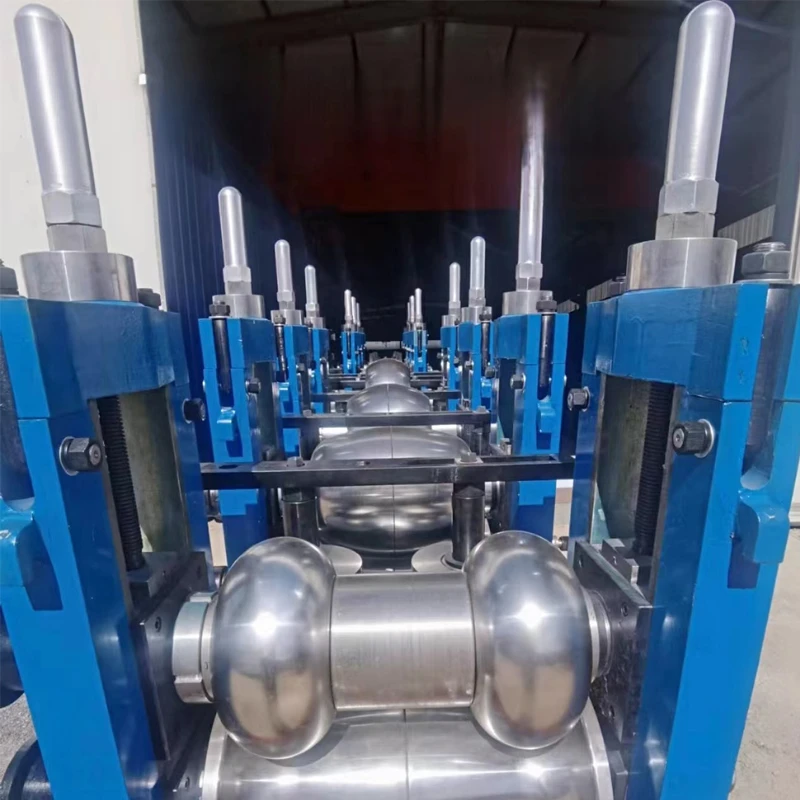manual decoiler
Understanding the Functionality and Importance of Manual Decoilers
In various industries, particularly in manufacturing and metalworking, the need for efficient handling of coiled materials has led to the development of specialized equipment, among which the manual decoiler stands out. A manual decoiler is a mechanical device designed to unwind coils of materials such as steel, aluminum, or other metals. Understanding its functionality and importance can significantly enhance productivity and streamline operations.
What is a Manual Decoiler?
A manual decoiler is a device that helps in unwinding coiled material in a controlled manner. It typically consists of a base with a spindle that securely holds the coil, allowing the user to manually rotate the spindle to release the material. This simple yet effective tool is particularly useful in situations where the automatic handling of material is either not feasible or too expensive. Manual decoilers can come in various sizes and designs, depending on the specific requirements of the operation.
How Does It Work?
The operation of a manual decoiler is straightforward. Once the coil is placed onto the device and secured, the user begins to unwind the material by rotating the spindle. This action carefully dispenses the material without causing damage, ensuring that it can be fed into machinery, such as presses or cutters, with ease.
The design of manual decoilers typically incorporates mechanisms to control the tension of the unwound material
. This is crucial because excessive tension can lead to material deformation or even breakage, while too little tension can result in tangling and misalignment. Some models even feature a braking system that helps maintain the required tension as the user unwinds the coil.Advantages of Using Manual Decoilers
1. Cost-Effective Manual decoilers are generally less expensive than their automatic counterparts, making them an ideal choice for small businesses or operations with limited budgets.
manual decoiler

2. Flexibility They can handle a wide variety of materials and coil sizes, making them versatile tools in a manufacturing environment.
3. Simplicity and Ease of Use With fewer components and mechanical complexities, manual decoilers are easier to operate, requiring minimal training for personnel.
4. Improved Safety They often feature design elements that promote safe handling of heavy coils, reducing the risk of accidents associated with more complicated machinery.
5. Space-Saving Design Due to their simpler construction, manual decoilers usually occupy less space than automated systems. This allows for more efficient use of floor space in industrial settings.
Applications
Manual decoilers are widely utilized across various industries. In metalworking, they are essential for feeding material into shearing, bending, or welding machines. The automotive industry makes frequent use of manual decoilers for handling metal sheets and strips. Additionally, in the construction sector, they can be used for unwinding rebar or wire coils, facilitating easier and more efficient installation processes.
Conclusion
The manual decoiler is a vital piece of equipment in the efficient management of coiled materials. Its simplicity, cost-effectiveness, and versatility make it an excellent choice for a range of applications within different industries. By incorporating manual decoilers into their operations, companies can improve their workflow, enhance productivity, and ultimately achieve better operational outcomes. As manufacturing technologies continue to evolve, manual decoilers remain a reliable solution for handling coiled materials safely and efficiently.
-
High Frequency Straight Seam Welded Pipe Production Line-BzZhou Xinghua Machinery Equipment Manufacturing Co., LTD.|line pipe steel&welded gas pipeNewsJul.30,2025
-
High Frequency Straight Seam Welded Pipe Production Line-BzZhou Xinghua Machinery Equipment Manufacturing Co., LTD.|High Precision&Automated SolutionsNewsJul.30,2025
-
High Frequency Straight Seam Welded Pipe Production Line - BzZhou Xinghua Machinery Equipment Manufacturing Co., Ltd.NewsJul.30,2025
-
High Frequency Straight Seam Welded Pipe Production Line-BzZhou Xinghua Machinery Equipment Manufacturing Co., LTD.|Precision Welding, High EfficiencyNewsJul.30,2025
-
High Frequency Straight Seam Welded Pipe Production Line|BzZhou Xinghua|Precision Welding&EfficiencyNewsJul.30,2025
-
High Frequency Straight Seam Welded Pipe Production Line - BzZhou Xinghua|Precision Engineering&EfficiencyNewsJul.30,2025


